Hubble Snaps Incredible New Image of a Glittering Globular Cluster
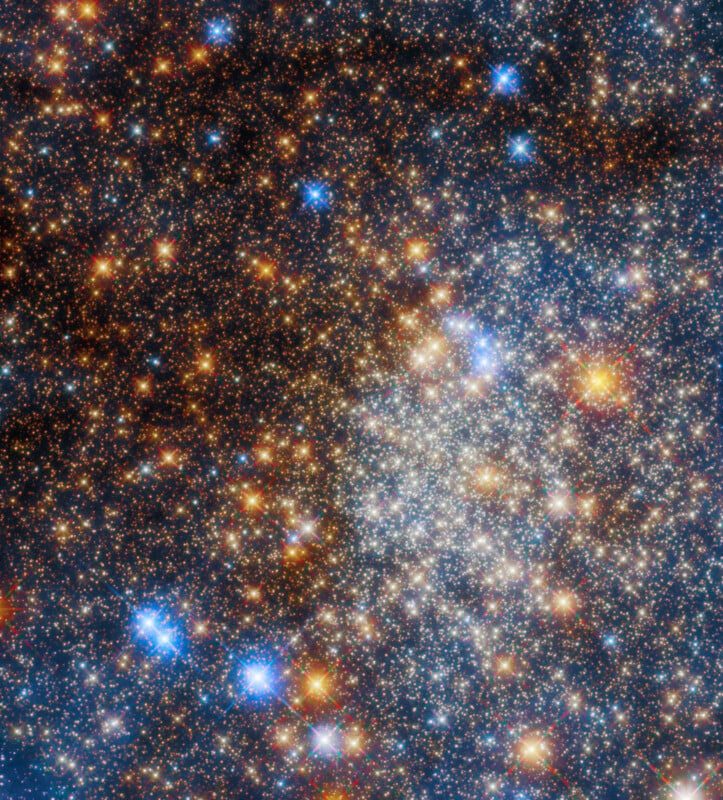
Approximately half a century ago, Turkish-Armenian astronomer Agop Terzan discovered 11 globular clusters. Today, the Hubble Space Telescope views Terzan’s clusters in details he could have only dreamed of at the time.
A globular cluster is a spheroidal aggregation of stars with a higher concentration toward the center. The beautiful clusters can contain millions of stars and provide a stunning subject for telescopes, including the Hubble Space Telescope. A new Hubble image looks at one of the clusters Terzan found nearly 50 years ago, Terzan 12. This conglomeration of stars is located in the Milky Way galaxy, one of about 150 ancient globular clusters in the galaxy’s outskirts.
“These clusters orbit around the galactic center, but far above and below the pancake-flat plane of our galaxy, like bees buzzing around a hive,” NASA explains. Terzan 12 is in the constellation Sagittarius, deep in the Milky Way. It is about 15,000 light-years from Earth and shrouded in gas and dust.
To take a slight digression, it is worth noting that Terzan discovered 11 globular clusters, yet Hubble’s latest subject is Terzan 12. The story behind this odd naming is that Terzan actually “discovered” the same cluster twice by accident, naming the repeat cluster Terzan 11 in 1971.
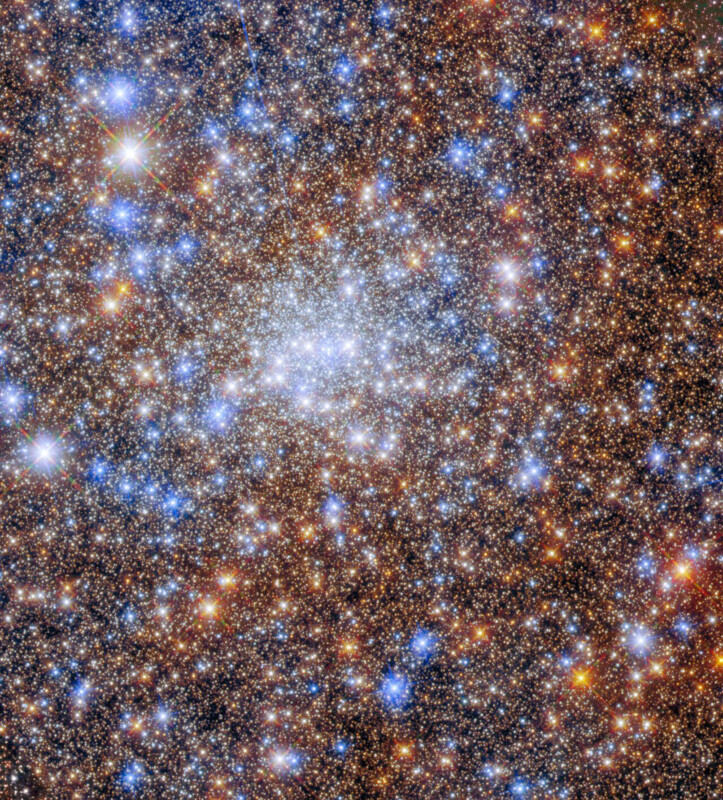
Although the astronomer quickly realized his error and tried to have it corrected, allowing Terzan 12 to become Terzan 11, Terzan did not make it very clear that Terzan 5 and Terzan 11 were the same, so the Terzan 12 name stuck. Although most astronomers accept the strange reality in which there is no actual Terzan 11, there have been “instances of confusion in the scientific literature over the past few decades,” per NASA. (https://esahubble.org/images/potw2241a/)
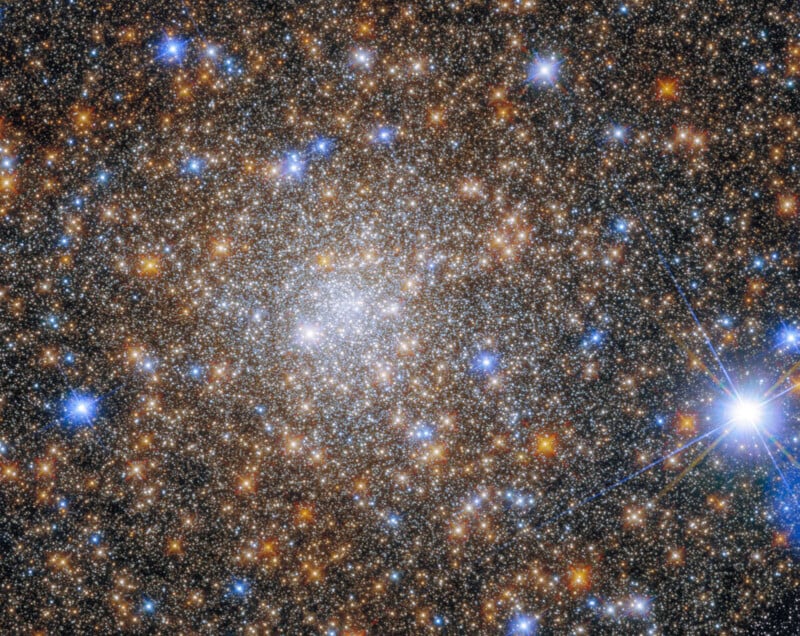
Hubble photographed Terzan 1 last fall. This cluster is located about 22,000 light-years from Earth in the constellation Scorpius. | Credit: ESA/Hubble & NASA, R. Cohen
Returning to Hubble’s new image of Terzan 12, the dust and gas make some stars look extremely red. Further, due to the distance between Earth and Terzan 12, there is not only a lot of gas and dust surrounding the cluster itself but also significant interstellar dust that the cluster’s light passes through on its way to Hubble.
As starlight travels through interstellar dust, blue light is more easily scattered, meaning that more of the redder wavelengths make it through to Earth. This causes certain distant stars to appear redder than they are, a process called “reddening.”
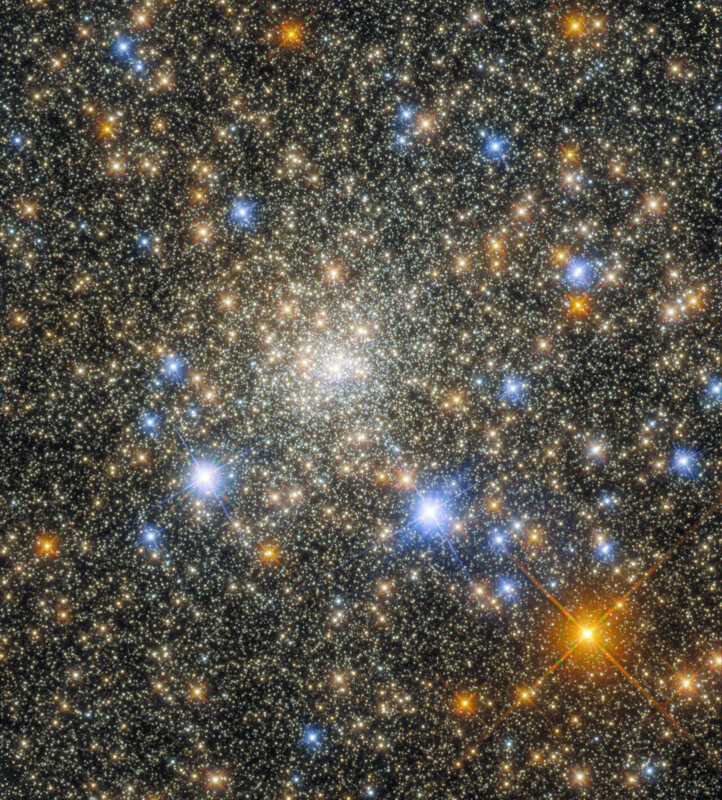
In a news release for an image of a different globular star cluster, Pismis 26, NASA writes, “Pismis 26 is located in the constellation Scorpius near the galactic bulge, which is an area near the center of our galaxy that holds a dense, spheroidal grouping of stars that surrounds a black hole. Due to its location within the dust-heavy bulge, a process called ‘reddening’ occurs, where dust scatters shorter wavelength blue light while longer wavelength red light passes through. Reddening distorts the apparent color of cosmic objects. Globular clusters are groups of stars held together by mutual gravitational attraction. They contain thousands of tightly packed stars and appear almost spherical in shape. Astronomers used NASA’s Hubble Space Telescope to study visible and infrared light from Pismis 26 to determine the cluster’s reddening, age, and metallicity.”
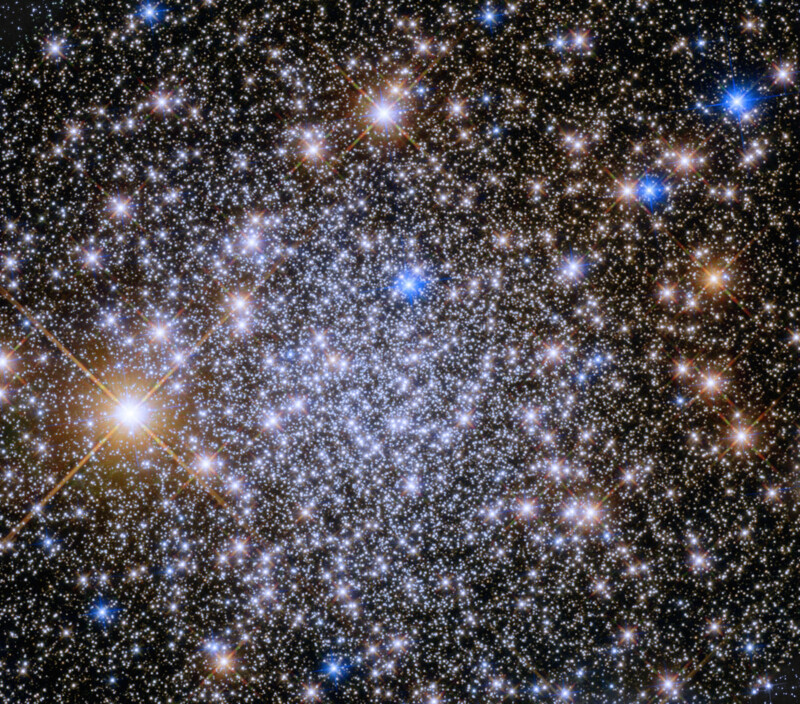
“The brightest red stars in the photo are bloated, aging giants, many times larger than our Sun. They lie between Earth and the cluster. Only a few may actually be members of the cluster. The very brightest hot, blue stars are also along the line of sight and not inside the cluster, which only contains aging stars,” writes NASA.
Since its launch in 1990, Hubble has imaged many globular clusters and has pioneered the study of cosmic clusters. “Hubble observations have shed light on the relation between age and composition in the Milky Way galaxy’s innermost globular clusters,” NASA explains.
Image credits: NASA, ESA, ESA/Hubble, Roger Cohen (RU)